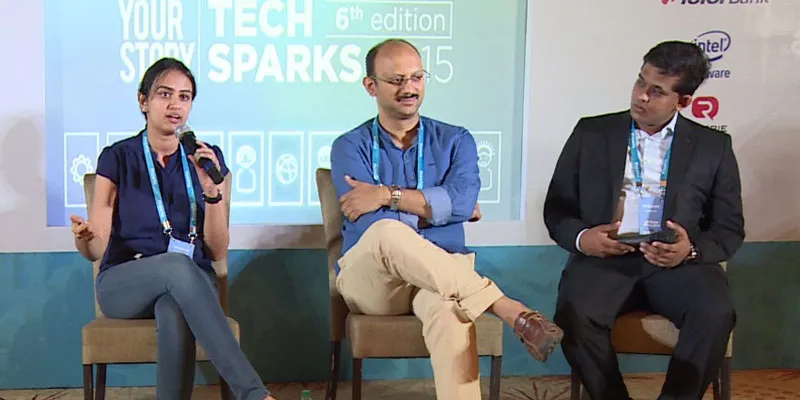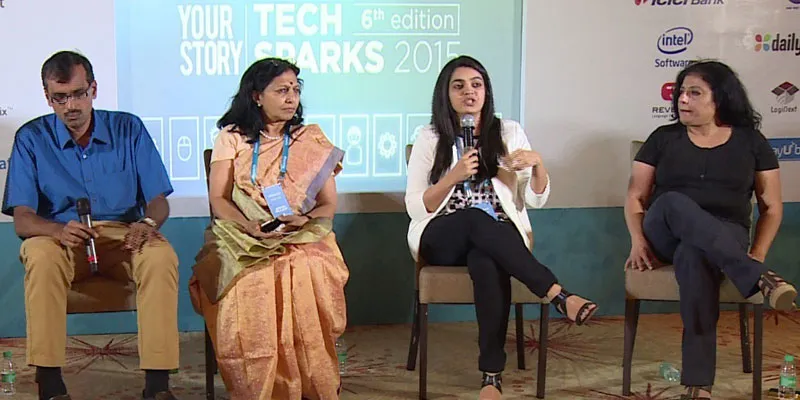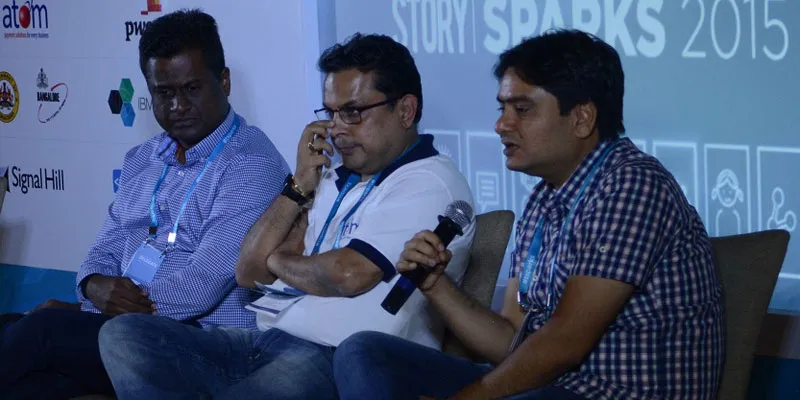Purpose, position and partners: three tips for targeting markets of a billion
The widespread adoption of digital technology in India coupled with the entrepreneur boom bodes well for startups targeting markets comprising hundreds of millions of customers, or even a billion users.
Across three panels at YourStory’s flagship TechSparks summit, 10 experts provided scale tips for aspiring founders: Prukalpa Sankar (SocialCops), Anand Naik (Boredbees Tech), Madan Padaki (HeadHeldHigh), Revathi Ashok (IAN), Neha Motwani (Fitternity), Aruna Schwarz (Stelae Technologies), Rajiv Raghunandan (seedX), Karthik Sathuragiri (Akamai Technologies), Dewang Neralla (Atom Technologies) and Sarvashrestha Paliwal (Microsoft).
Here are my three clusters of takeaways and tips from these 10 speakers. See also YourStory’s coverage of the TiE LeapFrog event and CII’s Young India Growth Hacks summit.

1. Purpose
Passion is a good start to target massive problems, but a sense of purpose will see you through the long hard slog of entrepreneurship. Choose a domain of giant proportions – such as improving job skills, education or healthcare in India, and find a problem to solve in that space.
Identify barriers which are holding back widespread access to meaningful content, financial services and connectivity – and work on opening those gates. Some of these can be consumer problems, others can be organisational issues. In this digital age, consumers can also be collaborators and co-creators, so tapping user generated content is a good move.
It is important to fall in love with the problem and always focus on the customer – otherwise, founders may get distracted by their own technology or become wedded to their original solution. Once passion and purpose are aligned, founders can then chart out a roadmap with milestones and opportunities for pivoting.
These considerations have helped founders find their right domains and offerings: Prukalpa Sankar (visualisation tools for Big Data), Anand Naik (ERP solutions for SMEs) and Madan Padaki (entrepreneurship solutions for ‘rural urban’ users).

2. Position
Once a problem space has been chalked out, founders need to figure out whether they want to offer a product, service, or ‘productised service.’ Each of these has important considerations for the way the offering is created, packaged, distributed, priced and sold.
The services option offers earlier opportunities for generating cash flow, but will also bind the company to quarterly targets after it scales to IPO stage. Products may need more cash investment up front and generate revenues only much later, but can offer better opportunities for scale. The services option also opens up new revenue streams via consulting, whereas the product option is lucrative if original breakthrough IP is generated.
Many startups have actually pivoted back and forth across these phases during their journey. Investors, for their part, are more interested in which of these has the better impact and greater scale, and also want proof that the founders are learning valuable lessons along the way.
These issues have led, for example, Stellae Technologies to launch B2B enterprise products instead of B2C services, and IAN to focus more on founder team strengths than herd-mentality pursuit of e-commerce and products.

3. Partners
As startups scale up and venture into the big turbulent ocean of technology solutions, they need to reach beyond their early ecosystem of mentors and investors, and partner with providers of massive global infrastructure.
These include the usual SMAC stack (social, mobile, analytics, cloud) as well as content delivery, payment and security infrastructure. The partner of choice should be one with a wide range of technology offerings, maturity and progress curves, and an engagement model for the broader startup ecosystem.
Therefore, Microsoft pitches itself to startups as a cloud service provider as well as accelerator for startups; Akamai exploits its position as a leading content delivery network for digital information; and Atom Technologies regards itself as a long-term startup partner in India due to its payment gateway offerings across IVR, apps, POS and cards.
All this is easier said than done: the checklist of purpose, position and partners. The panelists also identified a number of startup myths and mistakes that actually lead to tripping points instead of tipping points. For example, if the founding team is not properly balanced and has too strong an engineering focus, it may focus more on the features of emerging technology than on disruptive business impact.
Founders have to be agile and willing to learn from their own mistakes and the mistakes of others (see also YourStory’s book reviews of Fail Fast and Fail Better). Entrepreneurs have to learn to delegate tasks, and not become too emotionally attached to their own views, ideas and products.
In sum, to succeed in the long run and in large markets, founders have to learn how to balance ‘never let up’ with ‘always let go.’







